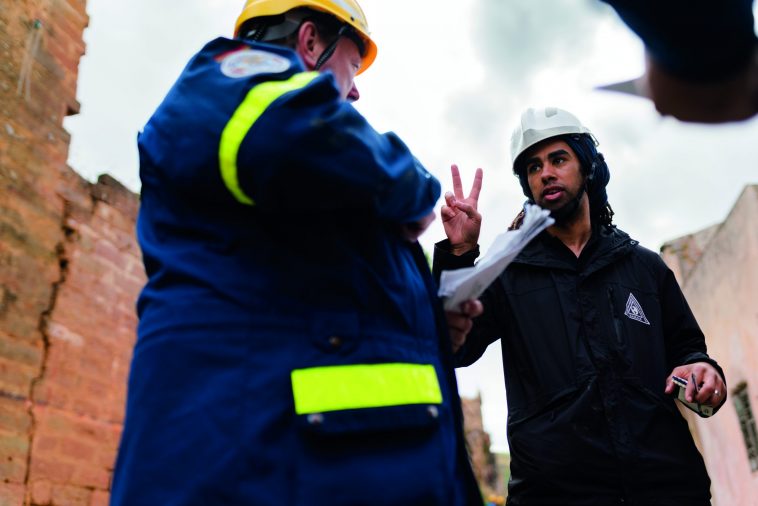To sell, insure or finance your house, you will need certificates of compliance.
This article covers:
- What a certificate of compliance is
- What you need certificates of compliance for
- Difference with warranties and building guarantees
- How to get a certificate of compliance from Building Control (NI only)
- How to get a certificate of compliance issued by a consultant
- What documents you need to keep
- How to get a retroactive certificate of compliance, e.g. to sell a house
More important than building on time or within budget is to make sure your house was built according to the parameters set out in law, and to have the paperwork to prove it.
Proof of compliance with the building regulations is the obvious requirement, but you will also need proof that planning permission has been secured and its conditions have been fulfilled, that boundaries and other features which relate to the development of your site are correct and that all works described in the specifications and drawings have been properly completed.
You will need these documents to sell on the house (conveyancing), and oftentimes to get it insured or financed.
Note that certificates of compliance usually do not carry a warranty. Warranties or building guarantees are usually 10 years in duration, i.e. 10 years after the house has been built if there are any structural defects due to design or construction, the warranty will pay to have it rectified.
To set up a warranty policy you will have to agree to inspections by the warranty provider at key stages of the build.
According to consultant representative bodies such as the Royal Institute of British Architects: ”These certificates do not have (and are not intended to have) the equivalent standing as NHBC cover or a Zurich guarantee.”
Generally speaking, certificates of compliance only mean that a qualified professional has inspected the works periodically during construction and has found nothing that departs significantly from the approved plans and drawings.
Certificate of compliance from Building Control

In NI local authority Building Control inspectors independently check that the house is being built to the stated standard. The authorities first approve the proposed drawings and then also supply a Completion Certificate at the end, after they have inspected the site at key times.
Building Control NI inspects every single project that requires certification, including small renovation projects that require structural or hazardous (e.g. on appliances) work.
The Building Control Completion Certificate is only issued after Building Control is satisfied that the dwelling is ready for habitation.
Snag lists are usually issued by Building Control for you to resolve any issues before they carry out their final inspection. The snagging process identifies parts of the work that have been practically completed but may require remedial action prior to official sign-off.
Know that the Building Control Completion Certificate can be issued before all works have been completed, if those incomplete works were not deemed necessary for the use of the building under the building regulations. Building Control only verifies compliance with building regulations.
In ROI even though local authorities do have Building Control inspectors, they seldom inspect self-builds.
They also have no role in issuing certification documents. The Building Control certification process in ROI can only be done by either opting in or opting out of appointing an Assigned Certifier.
An Assigned Certifier is a private consultant (paid by the self-builder directly) who is either a registered architect, chartered engineer or chartered building surveyor.
Certificates of compliance issued by consultants
Due to administrative costs, in ROI most self-builders choose to opt out of appointing an Assigned Certifier which means the self-builder takes on the responsibility for ensuring the build is compliant with the building regulations.
Even where the self-builder opts in, s/he as the client is the ultimate person responsible for building the house to current standards.
In an opt out scenario, self-builders have to keep on top of all the paperwork and make sure they get a final certificate of compliance when the build is complete.
Note that some mortgage providers in ROI insist that self-builders appoint an Assigned Certifier to their project. In that case both the Assigned Certifier and the builder must sign the Certificate of Compliance on Completion, supported by Ancillary Certificates from other members of the design team and from specialist subcontractors.
Full guidance for ROI is available in the Building Control Regulations’ Code of Practice for Inspecting and Certifying Buildings and Works.
In both NI and ROI if you take out a mortgage you will need a professional to sign off on the build stating that it is being built in accordance with the current regulations and approvals, in order to get the money released in stage payments. Guidelines are issued by the Council of Mortgage Lenders.
The professional you appoint to oversee the build, whether that be an architect, architectural technologist, engineer or surveyor, will supply certification during the building works and at the end of the project.
This individual must be experienced in the checking and monitoring of construction projects and possess valid professional indemnity insurance.
This person may or may not be the person who designed your house. Lenders will accept a third-party certifier provided that they meet the minimum standards of qualifications and experience.
The certifier will provide you with a detailed checklist of what they will be looking for at each scheduled inspection and will issue interim certificates after each phase as well as a final certificate on completion, known in NI as the Professional Consultant’s Final Certificate. This will include not just compliance with building regulations but also planning permission and other related aspects.
Be aware that a final certificate from your certifier confirms that work has been legitimately completed, so it can mean that it might prove difficult to get the contractor back on site if the job is not properly finished. The final certificate should only be issued at the end of the defects liability period and has the effect of releasing all remaining money due to the contractor, including any remaining retention. Check the contract you have in place with your builder.

What documents do you need to keep?
If you engage a contractor to manage all of the works, then they should provide all of the documentation at the completion stage. If you purchase materials yourself, you need to obtain the relevant paperwork; or if you engage subcontractors (direct labour) to complete the various stages, then you are effectively the principal contractor and will be responsible for record-keeping.
At the end of your project, you should have a project file (hard or soft copy) that contains all of the documentation needed to allow the final certificate to be provided. Satisfactory evidence that products and materials are suitable for their intended use will need to be provided to the certifier and also to Building Control NI.
For instance, if your working drawings specify that “all gutters and downpipes shall be zinc, to BS EN 612” or that “single skin profiled plastic roofing sheets shall be to I.S. EN 1013:2012” then you should be able to provide evidence that the products used in your building comply with those standards.
A supplier’s receipt with an accurate description of the materials may well suffice for basic products, but more complex and especially, safety-critical items will require certificates from the manufacturers or a suitable UKAS-approved third-party organisation (e.g. BBA, BRE, BSI, etc.) for NI projects, NSAI or CE marked with Declaration of Performance for ROI projects.
A product might have the correct markings and be supplied with certification that it complies with the required standard, but you need to make sure that the compliance covers the intended use of the product.
For example, a box of wall ties should carry marks of approval, but are the ties being used across a 200mm cavity, where their design restricts their use to a maximum 150mm wide cavity? Or are you using CE or Kite-marked pipes as sewer pipes when the certification is only for use as ductwork?
Commissioning reports for your ventilation as well as heat and hot water systems should also be retained. Note that ROI’s latest version of the building regulations makes ventilation commissioning reports mandatory.
Where relevant, keep a record of any conservation and environmental protection measures as well as health and safety compliance measures, including a record of any actions taken, for instance if a hazardous substance has been discovered. Photographic evidence can be useful in many instances.
Then there are the agreements with public bodies and service suppliers; these records can be dug up but it’s better to have them to hand to avoid delays.
For example if you need to route pipes or cables to your site from across the road, you will need to get the roads authorities to allow you to cut and repair the public road. A bonded agreement is often put in place for this, whereby you put money in a bond to be cashed if you don’t put the road back in the state you found it. You also need an agreement to make or alter any access adjacent to a public road.
You should also have agreements in place for the energy supply, telecommunication connections, water supply, etc. In NI if the wastewater is being discharged to a stream or sub-surface irrigation system, you need to supply proof that you have consent to discharge domestic effluent from NIEA. If you are connected to the wastewater mains or a group water scheme you will also need an agreement and proof of connection to same. You will also need a separate agreement if you intend to discharge surface water to a waterway.
In ROI the wastewater provisions are usually dealt with as part of the planning process. Where buying an old property with an onsite wastewater system that isn’t compliant to current regulations, check what can be done to remediate the situation prior to buying the house as this may be a stumbling block to obtaining planning permission.
In NI, it is often the case that older properties (pre-1973) have no consent to discharge, so your solicitor should have checked this for you and if necessary, arranged for the consent to be granted before completion of the sale.
If you’ve drawn up a contract, (which you really should have if you appointed a main contractor), keep a record of it, as well as a record of all of the solicitor’s documents.
Remember that you are technically not allowed to move into your newly built home until you’ve obtained an energy rating for the as-built house: Building Energy Rating in ROI, Energy Performance Certificate in NI.
With the energy rating comes the necessary as-built SAP calculations (NI) / DEAP calculations (ROI) and the results of any air permeability tests along with the energy rating report and results.
Retroactive certificates of compliance
With second hand homes what often happens is that there are no certificates of compliance in place. Sometimes this is also the case with new builds whereby a self-builder might have had sufficient funds to get started but might need a cash top-up to complete the job.
Or maybe the homeowner realises that he or she is not actually covered by their house insurance if the job has never been certified, or perhaps the house is being sold and the buyer’s bank or building society and the solicitors are asking for the completion certificate.
In all of these cases, the house will need to be certified retroactively. Experience has shown that even though it is nearly always possible get a certificate, a fair amount of investigative work is usually required costing quite a bit of time and money.
For instance, while routine checks will answer some of the questions, such as whether the visibility splays are in place, or what type of septic tank was approved for the site, more detailed inspections will also be necessary and some may be intrusive.
Foundations might need to be exposed or holes might need to be drilled to look inside inaccessible spaces using an endoscopic camera. If the quality of any material cannot be verified, e.g. site-mixed concrete, uncertified timber, etc., then tests may be necessary to check its properties.
In some cases, a structural engineer’s survey and report will be necessary. It is also not unknown to find that a house has been built differently to what is shown on the approved drawings; and this may require an application for retention with the local authority. A thermal imaging survey or an acoustic survey may also be necessary.








